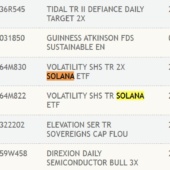Seen as protecting investors from stock losses and providing decent returns, the picture on bonds gets dimmer over a longer time frame

Article content
A change, it had to come
We knew it all along
We were liberated from the fold, that’s all
And the world looks just the same
And history ain’t changed
‘Cause the banners, they all flown in the last war
Won’t Get Fooled Again — The Who
As inflation rapidly accelerated toward the end of 2021, bond yields woke up from their decade-plus slumber breathing fire and brimstone. Subsequently, bonds have once again become a worthwhile asset class for the first time since the global financial crisis.
Advertisement 2
Article content
For those investors who, for whatever reasons, are unable or unwilling to hold all-stock portfolios, bonds have at times proven to be a magic potion from a portfolio perspective. The foundation of this magic is bonds’ potential to: 1. provide a reasonable return; 2. provide effective diversification from stocks during bear markets, thereby limiting overall portfolio losses.
Article content
By any measure, the bond market’s one-two punch of healthy returns and portfolio insurance over the past few decades has been impressive. The 4.71 per cent annualized real (after inflation) return of 10-year U.S. Treasuries over the 40 years from 1981 to 2020 is nothing to sneeze at. As indicated in the table below, bonds have also provided significant diversification benefits during recent bear markets.

Recency bias and the Jekyll and Hyde problem
Importantly, the benefits of holding bonds over the past few decades are anomalous from a long-term historical perspective.
That 4.71 per cent annualized real return of 10-year U.S. Treasuries over the 40 years from 1981 to 2020 stands in sharp contrast to the corresponding number of 1.36 per cent for the 80 years from 1941 to 2020 and compares even more favourably to the -1.89 per cent annualized real return for the 40 years from 1941 to 1980.
Article content
Advertisement 3
Article content
History also cautions against relying on bonds to diversify portfolios and mitigate losses when stocks decline. Despite providing much needed gains during the tech-wreck, the global financial crisis, and the COVID-crash, bonds have historically exhibited Jekyll and Hyde behaviour with respect to their correlation to stocks. The two asset classes have been positively correlated in 55 per cent of the 93 years from 1928 to 2020, and 50 per cent of the time since 1973.
Investors whose recency bias led them to believe that bonds are an ironclad hedge to stocks were sorely reminded of this fact in 2021, when stocks and bonds both suffered severe losses as central banks aggressively raised rates to combat inflation. Putting inflation aside, the simple fact is that when short-term rates were zero and 10-year Treasuries were yielding less than one per cent, there was only so much room for bonds to provide capital gains in the event of a bear market — the math just didn’t work!
The good news: decent yields and renewed diversification value
The first piece of good news is that central banks’ battle against inflation has pushed rates back up to levels whereby high-quality bonds provide yields that exceed the rate of inflation for the first time in recent memory. Investors no longer need to take additional risk and buy lower quality, high yield issues to avoid losing money in real terms.
Advertisement 4
Article content
The second piece of good news is that bonds have regained some diversification value. Given that 1. yields are currently at levels far above 2008-2021 levels, and 2. central banks have been largely successful in reining in inflation, there is renewed potential for bonds to experience meaningful capital appreciation in the event of a cyclical downturn and/or bear market.
This development has already played out during recent equity market hiccups. When global stocks declined 8.9 per cent from mid-July to early August, global bonds provided much needed relief, rising 3.1 per cent. Similarly, when equities fell 3.9 per cent from the end of August through early September, bonds once again came to the rescue with a 1.2 per cent gain.
The (sort of) bad news: we’re not in Elysium …
As I have previously written, there are many factors that render it highly unlikely that bonds will enjoy the tailwinds of the 1990-2020 era.
The ongoing transition to renewable energy will spur demand and price increases for minerals such as nickel, lithium, and copper, which may flow through into more broad-based inflation. Perhaps more importantly, politics, populism, trade tensions, and military conflict (either potential or real) will stymie, if not reverse, the explosion in global commerce that kept inflation firmly in check.
Advertisement 5
Article content
The upshot is that, although bonds’ diversification potential has come a long way since late 2021, it may nonetheless be lower than has been the case over the past few decades.
…but we’re not in dystopia either
Fixed income markets will probably not return to the capital loss ridden dystopia of 2022, but it is also likely that they will not revisit the Elysium (eternal paradise in ancient Greek mythology) of capital appreciation and hyper-diversification of 1990-2021.
Recommended from Editorial
For the foreseeable future, bonds are likely to be what they have been in “normal” times throughout history — a valuable, if unspectacular, asset class, providing portfolios with reasonable returns and diversification.
Noah Solomon is chief investment officer at Outcome Metric Asset Management LP.
_____________________________________________________________
If you like this story, sign up for the FP Investor Newsletter.
_____________________________________________________________
Bookmark our website and support our journalism: Don’t miss the business news you need to know — add financialpost.com to your bookmarks and sign up for our newsletters here.
Article content
















